 Considering the successful experience of the Bonomi Archive(related to the self-portraits), Prof. Carlo Bugatti, Director
of the Musinf, met in Rome with the photographer Ruggero Passeri, to examine the possibility of organizing and expanding
at an international level the large photographic archive preserved in the Musinf and dedicated to portraits of contemporary
artists. The project is supported by the Library of Visual Arts, coordinated by Prof. Stefano Schiavoni, with the co-operation
of the "Fondazione Senigallia", chaired by Mr. Michelangelo Guzzonato.
Considering the successful experience of the Bonomi Archive(related to the self-portraits), Prof. Carlo Bugatti, Director
of the Musinf, met in Rome with the photographer Ruggero Passeri, to examine the possibility of organizing and expanding
at an international level the large photographic archive preserved in the Musinf and dedicated to portraits of contemporary
artists. The project is supported by the Library of Visual Arts, coordinated by Prof. Stefano Schiavoni, with the co-operation
of the "Fondazione Senigallia", chaired by Mr. Michelangelo Guzzonato.The main collections of the Musinf, recognized of historical value, are those of Maria Mulas, Antonio Masotti, Paolo Mengucci, Ruggero Passeri, Antonio D’Agostino (Fluxus), and Giorgio Pegoli. We should also mention the photographic reportages from the openings of the Biennal Exhibitions of Venice. The Archive of Portraits of Contemporary Artists will be coordinated by Ruggero Passeri and Lorenzo Cicconi Massi, who will benefit from the assistance of Giorgio Bonomi, Antonio D'Agostino, Giorgio Pegoli, Patrizia Lo Conte, Blanche Bugatti, Marco Mandolini, Massimo Marchini, Alberto Polonara, Anna Mencaroni, Stefania Ronchini, Walter Ferro and other teachers from the Course of Photojournalism held by the Musinf.
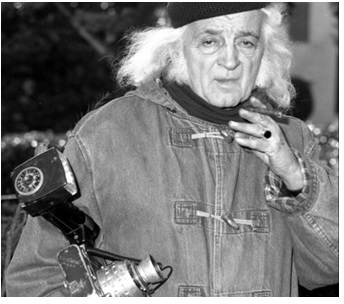 The Collection of portraits of Mario Giacomelli includes the photos taken by Paolo Mengucci to record his long and extraordinary
friendship and cooperation with Mario Giacomelli. The portrait taken by Paolo Mengucci, showing Giacomelli with his Kobel camera,
a cigar in his hand, wearing his beret and his denim duffle coat, became an iconic image for all those who love photography and
recognize Mario Giacomelli as one of the great masters of the photographic art.
The Collection of portraits of Mario Giacomelli includes the photos taken by Paolo Mengucci to record his long and extraordinary
friendship and cooperation with Mario Giacomelli. The portrait taken by Paolo Mengucci, showing Giacomelli with his Kobel camera,
a cigar in his hand, wearing his beret and his denim duffle coat, became an iconic image for all those who love photography and
recognize Mario Giacomelli as one of the great masters of the photographic art.
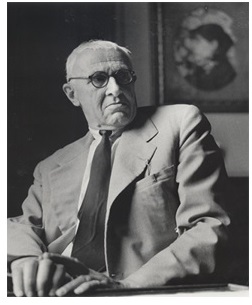 The Antonio Masotti Collection includes the images of an experimental projection of "The Gospel according to Matthew" over the
shirt of Pierpaolo Pasolini, and the portraits Antonio Masotti took of a great number of Italian artists.
The Antonio Masotti Collection includes the images of an experimental projection of "The Gospel according to Matthew" over the
shirt of Pierpaolo Pasolini, and the portraits Antonio Masotti took of a great number of Italian artists.
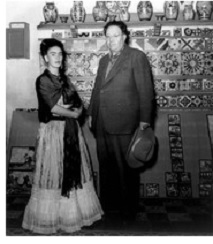 Frida Khalo and Diego Rivera in the collection of portraits by Leo Matiz
Frida Khalo and Diego Rivera in the collection of portraits by Leo MatizThe photos taken by Leo Matiz to Frida Khalo and Diego Rivera are part of the collection of 50 images kept in the Musinf of Senigallia.. The portraits by Leo Matiz will become part of the collection of portraits of contemporary artists that is still in progress of cataloguing at the Musinf.
We owe to Alexandra Matiz, Leo’s daughter, the reborn interest for the shots taken to Frida Khalo and Diego Rivera, as a consequence of the exhibitions in Paris, Rome, Genoa and Senigallia. Born in Colombia, and considered as one of the most groundbreaking photographers in the first half of the Twentieth Century, Matiz has portrayed with his Rolleiflex some of the most important people in the cinema and in the arts of his time. Matiz, born in Aracataca (Colombia), the magic macondo of "One hundred years of solitude" by Gabriel Garcia Marquez, was not only one of the greatest photographers of his time, but also a caricaturist, painter, gallerist, publisher and actor.
The Maria Mulas collection
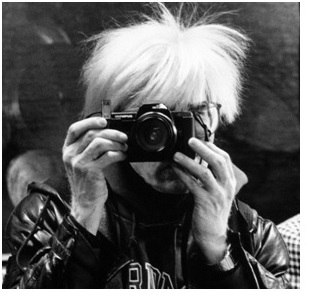 As written by Gillo Dorfles and other critics, the photo panels that Maria Mulas made by using portraits of Italian artists
belong nowadays to the history of the Italian photography, but also to the history of Art of the second half of the Twentieth
Century.
As written by Gillo Dorfles and other critics, the photo panels that Maria Mulas made by using portraits of Italian artists
belong nowadays to the history of the Italian photography, but also to the history of Art of the second half of the Twentieth
Century.
They are panels of great dimensions. Their titles are "Pac 1979" and "The Other Half of Heaven". The two panels, including
the portraits of 30 intellectuals in total, are a selection of the images taken by the artist in February 1979 at the Pavilion
of Contemporary Art in Milan (better known as PAC). It is reported that in just one evening Maria Mulas took more than one
hundred portraits of the intellectuals there, asking them to sit in the same place, on the ledge of the PAC, and deforming
them with a 20mm wide-angle lens.
"I was just curious", wrote Maria Mulas "and I wanted to use the 20mm not to reproduce large spaces but to concentrate on the
strange result of those bodies I was shooting overhead". The year before, in 1978, Maria Mulas had already experimented this.
At the Italian Pavilion of the Biennale di Venezia, she had put the artists who were at the opening up against the wall and
had portrayed them using the same 20mm lens, one inch away from their nose. The result was a number of super close-ups of
faces, distorted and sometimes unrecognizable. After the shots of the PAC opening, the gallery Il Milione in Milan asked
Mrs. Mulas to exhibit the portraits of the famous evening together with the previous ones at the Biennale in 1978. The two
distortions, so different one from the other, were coupled in an exhibition named "Biennale '78 e PAC '79".
The panel, renamed "The Other Half of Heaven" for the exhibition "Addio Anni 70", reintroduces the images of the women-artists
portrayed in 1979 during the exhibition led by Lea Vergine "The Other Half of the Vanguard 1910-1940".
The collection Antonio D'Agostino/Fluxus
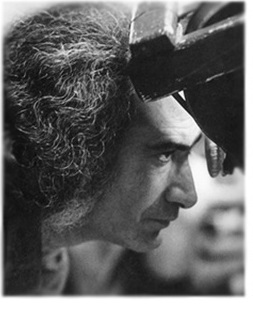 The photos taken by Antonio D'Agostino during his involvement in the experience of Fluxus became part of the Musinf collection
through a long and careful research, a cataloguing and a new printing 30x40 cm. under the supervision of the author,
video art, performances and happenings. Antonio D'Agostino faced all the art media, from the most traditional ones to
the newest technologies, with excellent results everywhere. For his work with Fluxus he was asked to attend the travelling
exhibition "Il Gioco e' Fatto", curated by Achille Bonito Oliva. In 2010 he attended the "Biennale Fluxus" at the Rome Auditorium,
curated by Achille Bonito Oliva, exhibiting the photos taken in the Seventies at the performances of Nam June Paik and Giuseppe
Chiari. The creativity of Fluxus expresses itself in actions, events underlining how the daily common life of individuals can
be considered as an art event. Fluxus includes the theory of making art as a nonstop flow of situations, perceptions, and
aesthetical and experimental experiences, without boundaries between the author and the audience, as it is in all the videotapes
and performances made by Antonio D'Agostino from the Sixties till now. The collection includes the images taken or filmed by
D'Agostino that witness his experience in Fluxus. They show the Fluxus leading men and women: Goeffrey Hendricks, Giuseppe
Chiari, Yoko Ono, Nam June Paik, Charlotte Moorman, Joe Jonas, Takako Saito, and others.
The photos taken by Antonio D'Agostino during his involvement in the experience of Fluxus became part of the Musinf collection
through a long and careful research, a cataloguing and a new printing 30x40 cm. under the supervision of the author,
video art, performances and happenings. Antonio D'Agostino faced all the art media, from the most traditional ones to
the newest technologies, with excellent results everywhere. For his work with Fluxus he was asked to attend the travelling
exhibition "Il Gioco e' Fatto", curated by Achille Bonito Oliva. In 2010 he attended the "Biennale Fluxus" at the Rome Auditorium,
curated by Achille Bonito Oliva, exhibiting the photos taken in the Seventies at the performances of Nam June Paik and Giuseppe
Chiari. The creativity of Fluxus expresses itself in actions, events underlining how the daily common life of individuals can
be considered as an art event. Fluxus includes the theory of making art as a nonstop flow of situations, perceptions, and
aesthetical and experimental experiences, without boundaries between the author and the audience, as it is in all the videotapes
and performances made by Antonio D'Agostino from the Sixties till now. The collection includes the images taken or filmed by
D'Agostino that witness his experience in Fluxus. They show the Fluxus leading men and women: Goeffrey Hendricks, Giuseppe
Chiari, Yoko Ono, Nam June Paik, Charlotte Moorman, Joe Jonas, Takako Saito, and others.
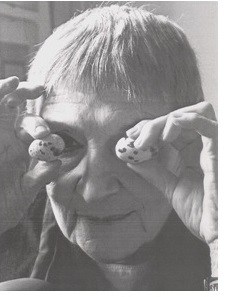 The Ruggero Passeri’s collection originally included forty portraits of the greatest contemporary artists, such as Pablo
Echaurren, Sandro Chia, Mirella Bentivoglio, Mark Kostabi, Gino Marotta, Pietro Cascella, Luca Patella, Lamberto Pignotti,
Nanni Balestrini, Nicola Carrino, Manfredi e Flavio Beninati, Chima Sunada. It represented the final result of the documentation
that the roman artist had dedicated to the art of the end of the twentieth Century. It is a charming and wide gallery of
existences, where every artist is shown in his/her daily life, beyond the dimensions of the critic and the art market. This
means a way of portraying very different from the reportage photography, while it is far from the intention to make an
enlightened catalogue by artistic genders and races. In his portraits Passeri choses the method of the special affinities,
in a living, real, poetical sum of individual worlds.
The Ruggero Passeri’s collection originally included forty portraits of the greatest contemporary artists, such as Pablo
Echaurren, Sandro Chia, Mirella Bentivoglio, Mark Kostabi, Gino Marotta, Pietro Cascella, Luca Patella, Lamberto Pignotti,
Nanni Balestrini, Nicola Carrino, Manfredi e Flavio Beninati, Chima Sunada. It represented the final result of the documentation
that the roman artist had dedicated to the art of the end of the twentieth Century. It is a charming and wide gallery of
existences, where every artist is shown in his/her daily life, beyond the dimensions of the critic and the art market. This
means a way of portraying very different from the reportage photography, while it is far from the intention to make an
enlightened catalogue by artistic genders and races. In his portraits Passeri choses the method of the special affinities,
in a living, real, poetical sum of individual worlds.
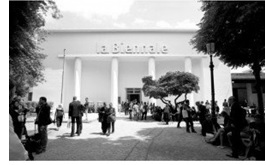 The collection – reportage on the "Biennale di Venezia" includes the shots taken by two teams of photographers from Senigallia,
who had been officially accredited for the opening of the Biennale d’Arte of Venice. It is made of hundreds of images of artworks
and artists, such as Favre, Ai Wei Wei, and Enzo Cucchi.
The collection – reportage on the "Biennale di Venezia" includes the shots taken by two teams of photographers from Senigallia,
who had been officially accredited for the opening of the Biennale d’Arte of Venice. It is made of hundreds of images of artworks
and artists, such as Favre, Ai Wei Wei, and Enzo Cucchi.
The first team of photographers included Stefano Bascone, Patrizia Lo Conte and Alfonso Napolitano (accredited by the magazine
"Arte Contemporanea" for the images and the video at the opening of the Biennale of Venice.) The second team included Alberto
Polonara, Anna Mencaroni, Stefania Ronchini and Anna Mancini.